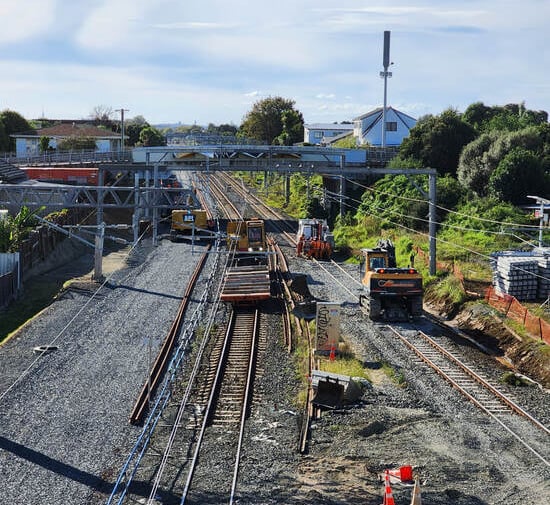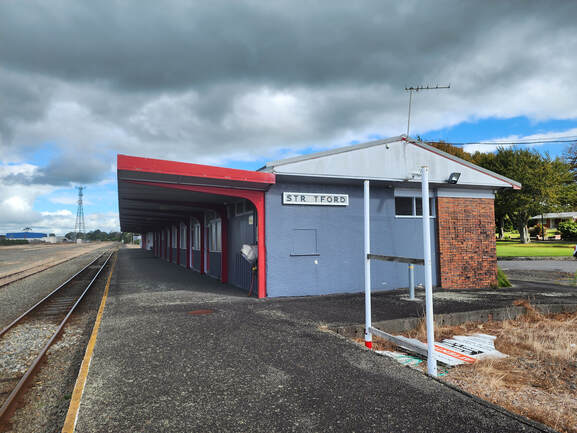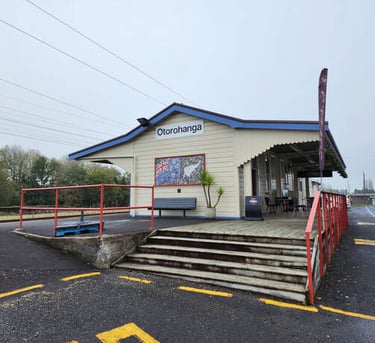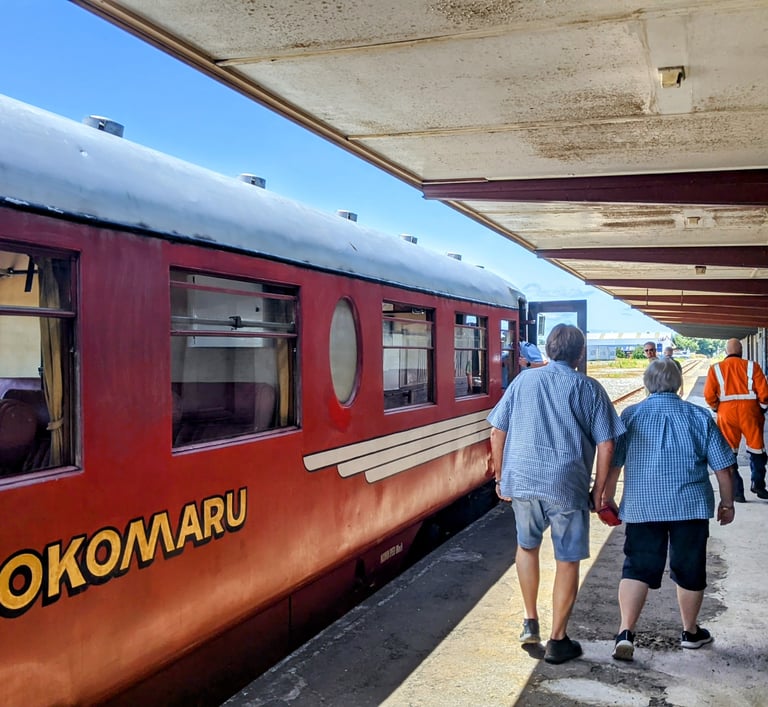From Cinderella to centrepiece
The case for integrated rail planning.
REFORMREGIONAL RAILINVESTMENTPLANNINGINFRASTRUCTURE
James Llewellyn
6/6/20235 min read


After many years as a Cinderella of the New Zealand network, there is evidence that inter-regional passenger rail may finally be coming to the ball. Whilst Auckland and Wellington metro networks have significantly improved over recent years, the same cannot be said for the rest of the country. Aside from the lonely flag bearers of Capital Connection and Te Huia, inter-regional passenger rail is limited to iconic – but infrequent – Great Journeys operated primarily for tourists and nostalgia hunters.
The recent budget announcement of funding for replacement rolling stock in the lower North Island comes hot on the heels of business cases being commissioned for further development of Te Huia. The Parliamentary enquiry into inter-regional passenger services has generated sufficient momentum to make June’s Future of Rail conference a potentially seminal moment in history. There is a huge opportunity to reach something that has hitherto been missing – an in-principle agreement that inter-regional passenger rail can and should make a significant contribution to enabling safe and environmentally sustainable longer distance travel across the whole country.
The acid test, however, is what comes next. A challenge which has bedevilled the country’s rail network is any kind of long-term development strategy; and this remains a major gap. The current NZ Rail Plan looks ahead only ten years, which is relatively short term in an industry which requires multiple decades of relative certainty around investment levels, project pipelines and development of key technical capabilities. Other than Capital Connection and Te Huia, investment proposals for inter-regional passenger rail are conspicuous by their absence in the NZ Rail Plan.
In defence of the authors of that document, where would they even start? There is no national strategy for transport as a whole, never mind rail. Successive governments – beholden to a three-year election cycle – have failed to take a long-term whole-of-system view and instead focussed either on the blindingly obvious – asset renewals, infill electrification and a few targeted capacity improvements – or transformational investments such as City Rail Link which then spawn the need for further upgrades elsewhere on the network to realise the full benefits.
Public Transport Authorities (PTAs) outside of Auckland and Wellington have been given precious little encouragement to consider either local or inter-regional passenger rail seriously and have their work cut out to make it a priority. Similarly, as a commercial state-owned enterprise KiwiRail focus on their core business of running freight services. They have enough on their hands to keep the current network operational, especially in the face of historic under-investment in maintenance and successive severe weather events. Rebuilds of damaged rail infrastructure are mounting up.
The current combination of piecemeal improvements and crisis management results from New Zealand having no effective framework for rail planning / investment in long term improvements or understanding the capability of a resilient network to accommodate additional demand. Aside from a multi-modal national transport strategy (which is way beyond the scope of this blog), there are several other key ingredients which are needed if inter-regional passenger rail is to progress much further.
Firstly, forthcoming Regional Spatial Strategies (RSSs) will need to identify and develop significant travel corridors, which provides an opportunity to understand the role that passenger rail could play in meeting future travel demand. An absence of robust origin / destination and forecasting data means that it is all too easy for sceptics to claim that there won’t be enough passengers before they lobby for new roads in the next breath. Being very clear on which markets passenger rail best serves, and full integration with local bus and ferry services, should be linked to locating regenerative development adjacent to stations. Regional planning assessments (RPAs) should take at least a 30-year view and set out the passenger rail services which could credibly deliver mode shift from car and air travel. If every region undertakes an RPA in partnership with its neighbours, a whole-of-system view for an integrated medium and long-distance passenger rail network can be established.
For their part, local councils need to ensure that their future Natural and Built Environment (NBE) plans provide the tools and rules necessary to deliver on the ground. The role of local communities – including iwi – is critical. Rail planning cannot simply be a “take it or else” approach - it must be grounded in the kinds of sustainable and socially cohesive places where people want to live, work, and play in the future. Economic opportunities presented by rail – especially for sustainable residential, employment and commercial development – should be identified and developed locally within an enabling and supportive planning framework.
On the supply side, route capability assessments (RCAs) should consider options for meeting demand identified by planners. These assessments would include both required service frequencies / capacities through new rolling stock, and infrastructure improvements needed to deliver them – including electrification, signalling, linespeed, double-tracking, level crossing removal and accessible stations. It is, of course, essential that passenger rail and freight co-exist in a modern high-performing network.
The RCAs would need to establish whole-of-life costs and benefits, based on critical success factors such as maximum journey times between different towns and cities, as well as seat capacity, resilience, safety, and environmental performance. As current owner of “below track” national rail network assets, KiwiRail should be in a pivotal position to lead this work. Establishment of a joint strategic planning and delivery unit for long term investments - across all layers of government and industry - would enable the brightest minds to focus on what the future system should look like, and how it can be implemented.
Taken together, RPAs and RCAs should aim to establish an integrated and prioritised long-term 30-to-50-year investment programme which could be considered for funding, most likely from a mix of government, passenger, and third-party sources. At present the national rail system as a whole has little to offer the domestic or overseas investor - but this could be very different if the Government, KiwiRail, PTAs, local councils, businesses and key stakeholders work together on delivering system-level change. Furthermore, the current situation – where expensive overseas capability is required to plan and deliver many rail projects – could be addressed through an industry strategy to develop the future workforce in the myriad of required technical skills for building an inter-regional passenger network. A long-term investment programme would give confidence to start this process in the schools and colleges. Businesses and investors would then have opportunities to support local design, production, testing and installation of everything from signalling control software to Overhead Line Equipment (OLE). Developing a New Zealand-based manufacturing capability for rolling stock would also be transformational.
System change requires more than a failure to think differently, and then complaining that transformation is just too hard. New Zealand is a truly innovative country whose people are more than capable of delivering what is required. With a strong sense of purpose and commitment to long-term planning / delivery, inter-regional passenger rail could play a strong role in a low emission transport system. If we really want it, Cinderella will have truly arrived at the ball.
James Llewellyn is Managing Director of Taith, a specialist public transport consultancy. James has previously worked for the UK Department for Transport, Waka Kotahi NZ Transport Agency, and Bay of Plenty Regional Council. He currently advises a number of Public Transport Authorities across the country.






